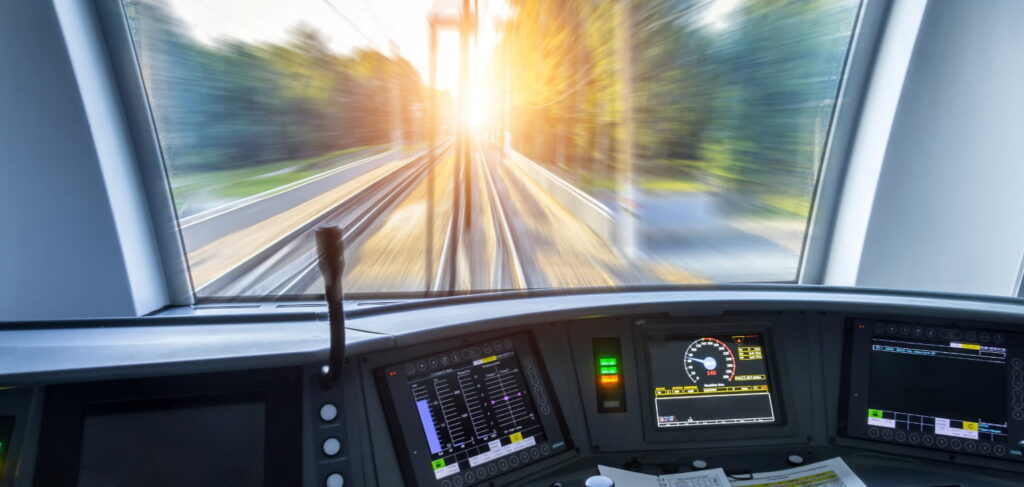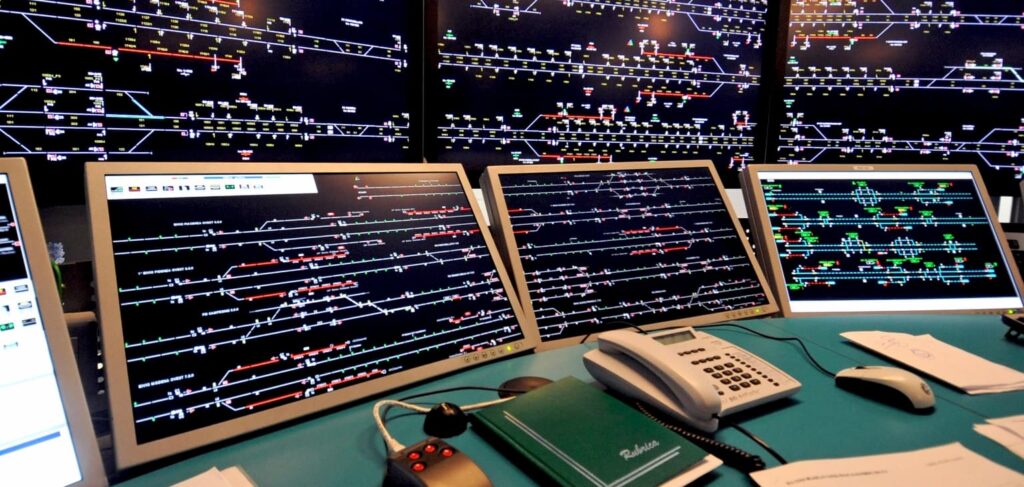With rapid changes in the technological landscape, staying ahead of the curve has become a significant challenge in the engineering world, impacting R&D departments, factories, and supply chains. Engineering is what powers the world we know today. Transportation relies on the engineering industry and the expertise of those who work in it to move the world forward.
While there has been a revival of advancements for railways in the past decade, the increasing density of the urban population is placing more demand on transit infrastructure. Signaling technologies of the past are unable to keep up with increased throughputs. This demand has resulted in transit operators shifting towards semi or fully-automated train operation and signaling systems.
This technical paper elaborates on various grades of automation that apply to train operations, enabling it to meet the intended functions.
Grades of AUTOMATION
General
In railway systems, specifically in metro train operations, automation refers to the process by which responsibility for the operation management of the trains is transferred from the driver to the train control system.
There are various degrees of automation (or Grades of Automation, GoA); these are defined based on the train operation’s essential functions which are the responsibility of staff and the train system itself. For example, a Grade of Automation 0 would correspond to on-sight operation, such as a tram on street traffic. Grade of Automation 4 would refer to a system in which vehicles are run fully automatically without any operational staff onboard.
The IEC 62290-1:2014 standard focuses on rail automation for public transit systems such as subways, metros, or commuter trains referred to as UGT or Urban Guided Transport. The IEC 62290-1 defines the various levels of automation and the minimum mandatory functions required to achieve these levels, are referred to as Grades of Automation.
The standard defines five levels of automation:
- GoA 0 – Line of Sight Operations
- GoA 1 – Non-automated Train Operation
- GoA 2 – Semi-automated Train Operation
- GoA 3 – Driverless Train Operation (DTO)
- GoA 4 – Unattended Train Operation (UTO)
GoA 0 – Line of Sight Operations
GoA 0 has no mandatory functions assigned to it, and therefore, it is considered a dark system or no signaling. The operational procedure manages all train movements and controls wayside elements (such as switches).
For example, suppose a train is required to move from a depot track to an operational track. In that case, it is the responsibility of the train operator to ensure the switches are in the correct position and ensure that the train does not collide with the train ahead.
Procedures govern all aspects of a GoA 0 system. The system does not protect trains.
GoA 1 – Non-automated Train Operation
A GoA 1 system is a conventionally-signaled system common to all subway or metro systems worldwide. The IEC 62290-1 has allocated an “Ensure Safe Movement of Trains” set of functions. This means the GoA 1 system will determine if it is safe for a train to proceed by locking switches and setting the aspect of the signals. However, the train driver controls braking, propulsion, and reading wayside signals accurately before moving the train forward.
The driver is also responsible for opening and closing train doors and determining whether departing from a platform is safe. Most mainline trains operate on GoA 1.
In a GoA 1 system:
- The driver observes the wayside signals or cab signals.
- The driver controls the propulsion and brakes.
- The driver performs the complicated function of correlating the wayside signal aspect into train commands to either apply brakes or accelerate.
GoA 2 – Semi-automated Train Operation
Rail automation is the ability to control the train’s movement without a driver, and GoA 2 is the first Grade of Automation level capable of functionally automating the core rail operations.
In GoA 1, the driver is the critical link between the aspect displayed on a signal and the commands sent to the trains’ braking and propulsion. In GoA 2, the vehicle and wayside controller eliminates and replaces these duties.
The wayside controller determines how far the train can travel by transmitting movement authorization data to the vehicle controller. The vehicle controller determines when to apply braking or propulsion effort based on the movement authority.
GoA 2 is the minimum signaling automation level but also the most complicated. GoA 2 automation is the ability to control propulsion and braking based on the conditions of the track ahead. While achieving GoA 2 automation is significant, more is needed for a modern urban transit system. The next Grade of Automation is to increase the level of trackside/platform awareness and control.

GoA 3 – Driverless Train Operation (DTO)
A GoA 3 system is aware of its surroundings along the track. Trackside devices installed along the track detects obstacles that may obstruct train movements, such as tunnel ventilation doors or work crews maintaining the track. These devices connect to a wayside unit that sets the movement authority for all trains. Another approach is for the train to “look” ahead and determine if there are any obstructions along the track. Onboard devices map the track ahead and identify potential hazards or blocks, determining whether the train needs to slow down or stop altogether. At the platform, a GoA 3 system must monitor for the unauthorized opening of platform doors, activate platform emergency stop devices, and create a protection zone if either occurs.
Most Communication-Based Train Control (CBTC) systems worldwide are GoA 3 because this is the level of automation most operators expect; control over the train, awareness of trackside hazards, and control over the platform.
GoA 4 – Unattended Train Operation (UTO)
GoA 4 is all about total automation. The transformation is complete at this level, and the system has taken over the train, wayside, and platforms. The operator’s involvement is reduced, if not eliminated. The operator’s role is to monitor the system and only get involved if the automated system cannot handle a failure.
GoA 4 has also extended its reach into the yard, which means that human intervention is no longer required to bring a train from the depot tracks to the mainline. GoA 4 will “wake up” the train, perform self-tests, launch the train into the mainline, route the train to the yard at the end of service, park the train in the depot track, command the train to “sleep”, and repeat the entire process the next day. The involvement of a human operator is reduced to just monitoring the system and performing maintenance functions when required.

Process to Derive the Grade of Automation

What Makes Automation Possible?
Technical progress has made train control systems capable of supervising, operating, and controlling the entire operational process. The key elements for this are:
- Automatic Train Protection (ATP) comprises the system and all equipment responsible for basic safety. It helps avoid collisions, red signal overrunning, and crossing speed limits by automatically applying the brakes. A line equipped with ATP corresponds (at least) to a GoA 1.
- Automatic Train Operation (ATO) ensures partial or fully automatic train piloting and driverless functionalities. The ATO system performs all the driver’s functions except for door closing. The driver only needs to close the doors, and if the way is clear, the train will automatically proceed to the next station. This corresponds to a GoA 2. Many newer systems are entirely computer controlled; however, most systems still elect to maintain a driver or a train attendant to mitigate risks associated with failures or emergencies. This corresponds to a GoA 3.
- Automatic Train Control (ATC) performs the normal signaler operations such as route setting and train regulation. The ATO and the ATC systems work together to maintain a train within the defined tolerance of its timetable. The combined system will marginally adjust operating parameters, such as the ratio of power to coast when moving and station dwell time, to bring the train back to the timetable slot defined for it. No driver or staff is assigned to accompany the train corresponding to a GoA 4.
Metro Automation

Why Choose Train Automation?
Implementing Unattended Train Operation (UTO) systems allows operators to optimize the running time of trains, increase the average speed of the system, shorten headways up to 75 seconds, and reduce the dwell time in stations (in optimal conditions) to 15 seconds.
- Greater flexibility in operation: UTO systems offer tailored service coverage, and help in reducing overcapacity supply at off-peak hours while also enabling operators to introduce trains in response to sudden demand surges. By taking the human factor out of the driving equation, operators gain flexibility and can better use assets.
- Impressive safety records: UTO systems also offer safer operations by reducing the human-risk factor. Well-designed systems have proven reliability over conventional metros, and hold an impressive safety record.
- Increase in quality of service: Passengers perceive an increased quality of service thanks to the enhanced reliability of trains, and shorter wait time on platforms.
- Financial feasibility: For new lines, automation costs have a relatively low comparative weight within the overall budget. Main cost factors are connected to the rolling stock, the signaling & control systems, and platform & track protection systems.
- Rolling stock: Increased commercial and average commercial speeds, reduced headways, and the optimal distribution of reserve train sets along the lines translate into fleet gains. Thanks to higher reliability, it is possible to achieve more capacity with the same (or even reduced) fleet size; the technical reserve (spare vehicles) can also be downsized.
- Signaling and control systems: Full UTO is more expensive than traditional ATP systems. However, the current trend is to install CBTC systems on new lines – even with drivers (GoA 2). With the signaling technology being the same, the cost difference is marginal in the case of a new line.
- Platform and track protection systems: The need to replace the driver’s role in preventing platform and track incidents represents the highest civil engineering cost increase.
- Operational cost factors – Staff and energy gains: Automated lines come clearly ahead of conventional lines when factoring in operational costs. Some studies indicate a reduction in operating costs by half. Staff costs are significantly reduced as the drivers’ function is eliminated, even in cases of line conversion, when staff is likely to be retrained and deployed to other functions. Acceleration and deceleration patterns can be adjusted to reduce energy consumption and maximize energy recovery, thus significantly reducing energy costs. While maintenance costs are marginally increased due to the introduction of the platform and track protection systems, the overall balance is positive due to the personnel and energy costs saved.
- Holistic efficiency and organization opportunities: Implementing UTO (as a new system or retrofit of an older line) is a significant milestone in the life of the operating company. The introduction of a more sophisticated computerized system and Operation Control Centre (OCC) should be an opportunity to review most operation processes. It helps assess how they can be improved and “plugged in” to the system to extract maximum benefit from the data process capabilities installed, and also yield better performance at optimized costs. The main operation areas likely to be affected are operation resource planning, staff training, rolling stock management, maintenance management, and quality management.
Why Quest Global?
At Quest Global, we strive to be the most trusted partner for the world’s hardest engineering problems. With our deep industry knowledge and exceptional digital expertise, we are committed to making rail journeys safer both on and off the track.
We have an expert software development team of train signaling veterans and highly-qualified software engineers providing end-to-end services across safety critical aspects.
As trains evolve and become more complex, the underlying software that enables various grades of automation plays a vital role. Our testing labs execute test scripts on this software. Using a real-time simulator, we test complex requirements thoroughly across multiple baselines to achieve a near 100% success rate all while providing significant cost benefits to our customers.
To learn how Quest Global’s transformative engineering solutions can help you increase passenger safety while saving time and cost with automation, connect with our experts.
About the Authors
Sendhil Kumar G and Durai Murugan K penned this article. The authors have a combined experience of close to 44 years in the rail and automotive industry.
Sendhil Kumar G holds a Master of Technology in New Product Design. He has a combined experience of over 20 years, with 17 of those years in interior, exterior, car body, and systems design for the railway sector.
Durai Murugan K holds a Master of Technology in Engineering Design and a Master of Business Administration in Operations Research. He has over 24 years of experience in rail, industrial, automotive, and oil and gas, with eight years of experience in interior, exterior, and systems design for the railway sector.
References
- International Standard IEC 62290-1
- International Association of Public Transport
- CBTC Solutions
- Railway Safety & Standards Board (RSSB)
- Train Control Management Systems (TCMS) Testing for a major Rail OEM



